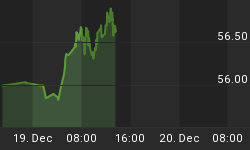For the past couple years emerging markets and emerging market debt have been the place for investors. That's quite a contrast from just a few short years ago when the Asian and Russian crises captured the investing world's attention. Back then investors shunned emerging markets and their debt as if both were a contagious virulent virus.
So what's behind the change? Too many things for a short article like this one. Suffice it to say yield is among them and fresh capital. Another way to spell yield is spread and the spread between U.S. Treasuries and that of emerging market world debt has narrowed dramatically in the last two years, pushing up the value of emerging market debt and their equity markets; and, in the process, pushing up risk. You remember yield, the manna dew of the fixed income market, not to mention all those pension funds, insurance companies and retirees living on fixed incomes. At one point during the Russian crisis spreads reached 1400 basis points. By the latest count that spread has narrowed to around 280 basis points. Those numbers may be off a bit, but you get the point.
We realize that emerging markets include more than just Asia, but Asia is now the hot ticket in many pundits' view and not without good cause, notwithstanding the recent earthquake and tsunamis. Much of the sovereign debt there has been upgraded recently by rating agencies and their economies (thanks a great deal to the big U.S. trade deficit and China's seemingly bottomless needs) have been booming. After a downturn last summer, Asian equity markets shot skyward last fall, providing investors who hung around with healthy returns. And those healthy returns many believe are becoming increasingly difficult to find among offerings in the more developed parts of the globe.
For still more evidence that many feel Asia, minus Japan, is the place to put money in 2005, take a tip from those old movie commercials. Instead of the bouncing ball, follow the hedge funds and the fresh capital. Though 2004 was a difficult year for most hedge funds, such was not the case among Asian-based hedge groups. And like the saying says, success attracts competition. By most accounts hedge funds, including some of the largest U.S. players, are flocking to Asia after staying clear since the 1997-98 meltdowns there.
That most pundits expect Asia as a region to do well again in 2005 means a lot of retail investors and their advisors will probably run out and invest in a fund indexed to the entire area. That's probably a mistake. Notice the emphasis on the term probably. Leaning how to hedge in this business is essential. Many of the best performing Asian markets in 2004 are among the smallest, least liquid. A better bet probably (there's that word again) would be to select a fund that focuses on those Asian countries with a currency peg to the U.S. dollar. That way investors can take advantage of further dollar weakness, though don't be surprised if the dollar, at least temporarily, sometime in 2005 surprises to the upside.
South Korea's economy is less export-dependent, Marc Faber, editor of "Gloom, Boom and Doom," likes Malaysia, good old Hong Kong has some companies that benefit from a weakening greenback and Singapore makes the grade on many lists.
So here's a resolution for 2005 you might want to consider: stick around and see what emerges.















